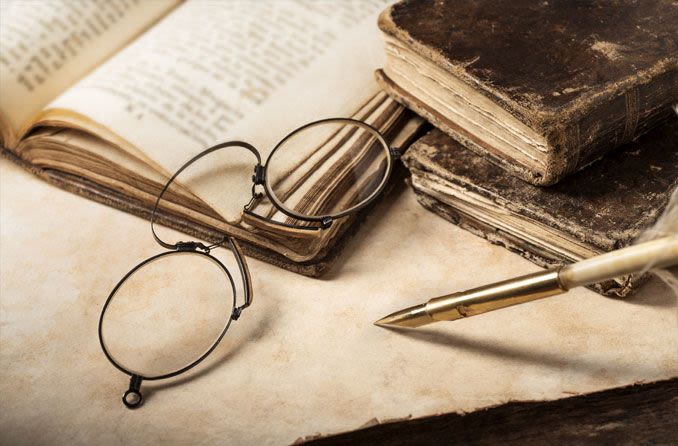Infographic: How eyeglasses work and a history of glasses

Eyeglasses have been around for centuries, but there are new advancements in technology making them better all the time. Learn how glasses work and the latest tech that is making them better below!
WANT TO CHECK OUT YOUR GLASSES OPTIONS? Find an optical store near you or online.
To embed this infographic on your website, please copy the code below.
WANT TO CHECK OUT YOUR GLASSES OPTIONS? Find an optical store near you or online.
How Eyeglasses Work and The Tech That Helps
In 1784, Benjamin Franklin invented bifocal glasses, allowing him to read and see long distances at the same time
A Brief History of Glasses
* 13th Century: First glasses known to history, used and spread by scholarly monks
* 18th Century: Added temples to hold glasses over the ears, allowing hands-free use
* 19th Century: Mass-produced frames and lenses made glasses accessible to all
* 20th Century: Lenses became lighter, less breakable, and coated to reduce harmful light
* New materials advanced style and utility Today, 184 million Americans wear glasses — about 64% of the population
* BUT how many know how their glasses actually work?
Form and Function
* Why Do I Need Glasses?
* Astigmatism — Nearly 36% of Americans experience this light refraction issue
* If you have astigmatism:
* Imperfectly curved corneas result in blurry vision
* This can often compound with other vision issues
* Myopia — 33% of Americans need eyewear due to nearsightedness
* If you are nearsighted:
* Light rays focus in front of the retina instead of directly on it
* Glasses correct this by diverging light rays backward
* Hyperopia — 4% of Americans need vision correction due to farsightedness
* Presbyopia, or age-related farsightedness, affects 25% of people worldwide
* If you are farsighted:
* Light rays don’t have a focus point even once they reach the retina
* Glasses correct this by converging light rays forward
* How Glasses Work
* Curved lenses bend light rays as they approach the retina
* The strength of the prescription changes with the degree of the curve
* Convex Lenses
* Curve inward, bending light rays backward
* Used to correct nearsightedness
* Concave Lenses
* Curve outward, bending light rays forward
* Used to correct farsightedness
* Multifocal Lenses
* Each lens is broken into 2-3 segments with different correction
* Can include correction for distance, near, and intermediate vision
* Progressive lenses have the same benefits as bifocals or trifocals, but without visible lines
* Advancements in Lens Tech
Compared to traditional glasses, the latest tech offers great benefits
* Better Lens Materials
* High-Index Plastic: Allows lenses to be thinner and lighter than glass ー and offers better protection against UV rays
* Polycarbonate & Trivex: Up to 10X more impact-resistant than plastic ー recommended for safety glasses, sports players and children
* Reduced Glare & Sunlight
* Polarized Lenses: Reduce glare from screens and other reflective surfaces 一 like a calm lake 一 to reduce eye fatigue
* Light-Adaptive Lenses: Automatically adjust their tint to current light conditions 一 staying clear while indoors and darkening in the sun
* Filtering Wavelengths
* Blue Light Filtering: Filters out some blue light from digital screens which may make viewing your screen more comfortable
* Color Enhancing: Special filters modify the wavelength of light to make colors clearer 一 for those with red-green colorblindness New technology is changing how we look at 一 and in 一 vision wear
The Future of Eyewear
* Smart Glasses
* Incorporate sensors, bone conduction speakers, and gesture controls
* Allow hands-free calling, wireless music listening, and activity tracking
* Some models are even equipped with a camera and mini display
* The result? Glasses could replace other wearable tech
* Nano-Drops
* 3-step system which measures light refraction using a smartphone app
* An individual’s optical pattern is measured by a laser device and then specially made nanoparticle drops are used to change the trajectory of light passing through the cornea
* The result? Eye drops could replace corrective lenses
* Visual Cortical Prosthesis System
* A brain implant using a camera attached to glasses, designed to give sight to those without
* Converts images to electrical impulses in the user’s brain
* The result? Blind users may be able to see again
What’s Next? Researchers are developing auto-focusing smart glasses — using eye-tracking technology to focus near or far, depending on where you look
Vision tech is changing — Are your glasses keeping up?
Page published on Tuesday, October 15, 2019







